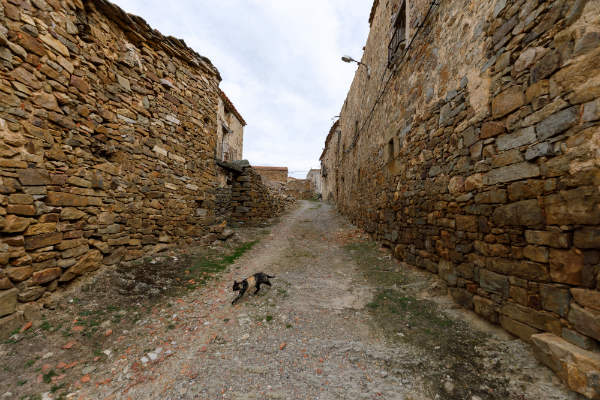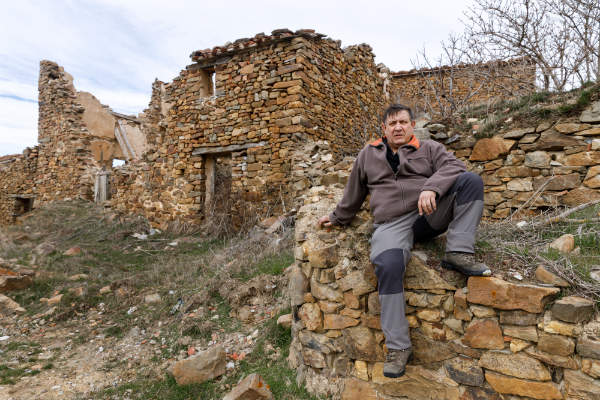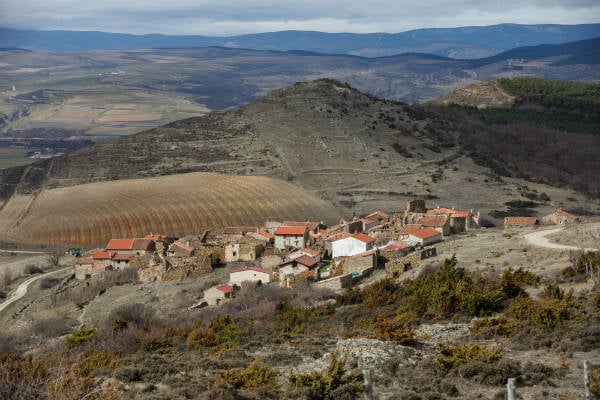A rural exodus, which began in the 1950s as people moved to find work in factories, has left some parts of Spain with just two people per square kilometre — the same density as in Siberia.
This is the case in parts of Castile, a vast region in central Spain where Sarnago is located, in the northern Aragon region and the southern provinces of Extremadura.

It makes Spain a “strange country within Europe” since no other similarly sized nation on the continent has such demographic deserts, Spanish writer Sergio del Molino wrote in his travel book “La Espana Vacia” (“Empty Spain”), published last year.
“The depopulation here was brutal,” said Jesus Hernandez, the mayor of San Pedro Manrique, a larger town of around 600 residents near Sarnago.
The emigration from the region was especially fuelled by a decision in 1965 while Spain was in the grips of the dictatorship of Francisco Franco to plant 22,000 hectares (54,000 acres) of pine trees to feed the paper industry, which pushed out cereal farming.
Two years later, Carrascosa's father moved his family to Tudela, a town further east in the fertile Ebro Valley.
Not forgotten
But wind-swept Sarnago, which at one point was home to about 400 people including 30 children, has not been forgotten by its former residents, who have restored 25 of its 40 houses and now have running water and access to electricity.
Carrascosa, who heads an association that seeks to reverse the village's fortunes, is proud of his three-bedroom home in Sarnago, which he visits regularly for short stays.

Through meetings, a magazine and social media, he encourages other former residents to maintain a link with the village too.
The restoration of homes, though, has still not led to any permanent residents, mainly due to lack of public services in the village, located some 200 kilometres (135 miles) northeast of Madrid.
The nearest public health centre is four km away in San Pedro Manrique but offers only basic medical care.
There is a primary school there as well, with 66 children, but no high school.
Jesus Catalan, a 71-year-old pensioner, and his wife live in Sarnago from March to October but leave in winter when temperatures can drop to minus 15 C.
“January and February are very hard and if there is a heavy snowfall you
are trapped,” he said.
Rural tourism has grown in recent years in the region, which boasts picturesque tree-covered valleys, mountains and even dinosaur footprints.
Father of two Gonzalo Esteban, 42, moved to the nearby town of Yanguas, with just 40 residents, in 2001 with his wife from Valladolid, a city of 300,000 residents, 250 km away, to open a rural inn with a restaurant
specialising in mushroom dishes.
But Esteban said he was aware that the town, which has just seven young families including his own, could easily die out.
“All it would take is for three families to leave with their children,” he said.
Rural tourism is not enough to make up for the decline in agriculture, as farm workers over the decades have been drawn away to factory or administrative jobs in the nearby Basque Country and Navarra.
Elsewhere in Spain, the industrialised regions around Madrid and Barcelona also proved a pull to rural workers, while out-of-date machinery and farming techniques in poorer places sent people in search of better paid jobs.
Incentives to farm
Farming is key in revitalising the deserted areas, unions and environmentalists argue.
“If there are no farmers and livestock breeders, villages become depopulated,” said Aurelio Gonzalez, head of the regional branch of the union of small farmers and breeders.

European Union agricultural subsidies, which focus on boosting competitiveness instead of “the net amount of jobs created”, are also to blame, said Daniel Lopez, of environmental group Ecologists in Action.
He pushes for more support for ecological farming, with similar programmes as in France and Italy.
During the medieval Reconquest, or Christan campaigns to recapture territory from the Moors, livestock farmers received financial incentives to set up on land taken from the Muslims, Carrascosa said.
Juan Antonio Sanchez Quero, who is in charge of fighting depopulation at the Spanish Federation of Municipalities and Provinces, said it was time to again offer fiscal incentives to livestock farmers to reverse a process that threatens to close many towns.
“Something like that” could help his region and others like it, Carrascosa said.
By Álvaro Villalobos / AFP




 Please whitelist us to continue reading.
Please whitelist us to continue reading.
Member comments